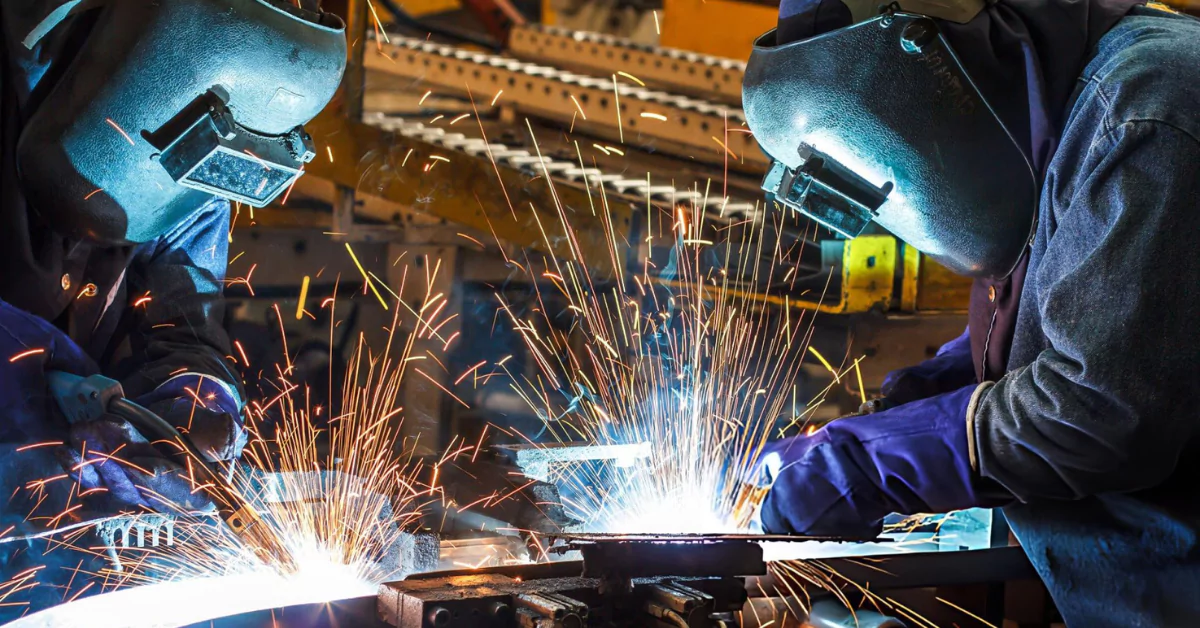Understanding Metal Fabrication Processes
Metal Fabrication is a comprehensive process that involves transforming raw metal materials into finished products or components. This process is widely used in industries such as construction, automotive, aerospace, and manufacturing, where durable and customized metal structures or parts are required.
Metal Fabrication Definition
Metal fabrication, by definition, refers to the process of cutting, bending, shaping, and assembling metal materials into a finished product. It is an essential aspect of metalworking and involves various techniques, tools, and equipment to achieve desired outcomes.
The Metal Fabrication Process
The metal fabrication process is a multi-step procedure that requires skilled craftsmanship and advanced machinery. Below are the key stages:
Design and Engineering
Before starting fabrication, engineers create detailed designs and blueprints. Advanced software helps design precise models and prototypes.
Cutting
Metal sheets or bars are cut to specific dimensions using tools like laser cutters, plasma torches, or water jets. This stage lays the foundation for subsequent processes.
Bending and Shaping
Metal pieces are bent and shaped into desired forms using press brakes, rollers, or specialized equipment.
Welding and Joining
Welding is an integral part of metal fabrication work. It joins individual components to create complex structures or assemblies.
Machining
Machining involves refining the fabricated metal using techniques like drilling, milling, and turning to achieve precision and functionality.
Finishing
Finishing includes polishing, painting, or applying protective coatings to improve the appearance and durability of the metal product.
Types of Metal Fabrication
Metal fabrication can be classified into several types depending on the application:
Custom Metal Fabrication
Custom fabrication caters to specific project needs, offering flexibility in design and functionality.
Industrial Metal Fabrication
This type focuses on large-scale production for industrial applications, such as machinery and infrastructure.
Commercial Metal Fabrication
Used in creating products like furniture, tools, and decorative items, commercial metal fabrication emphasizes aesthetics and usability.
Structural Metal Fabrication
Structural fabrication involves making components for buildings, bridges, and other large structures.
Sheet Metal Fabrication
This process works with thin sheets of metal to create parts like panels, enclosures, and ducts.
What Does a Metal Fabricator Do?
A metal fabricator is responsible for crafting metal structures and components based on blueprints and specifications. Their duties often include:
- Reading and interpreting technical drawings.
- Cutting, welding, and assembling metal parts.
- Operating specialized machinery for bending and shaping.
- Inspecting finished products for quality assurance.
Key Skills for Metal Fabricators
- Proficiency in welding and machining techniques.
- Knowledge of various metals and their properties.
- Attention to detail and precision in execution.
Industrial Applications of Metal Fabrication
Metal fabrication plays a critical role in various industries, including:
- Construction: Fabrication of beams, columns, and frames for buildings and infrastructure.
- Automotive: Manufacturing vehicle components such as chassis, panels, and exhaust systems.
- Aerospace: Producing lightweight and durable parts for aircraft and spacecraft.
- Energy: Creating metal components for power plants and renewable energy systems.
Benefits of Metal Fabrication
- Durability: Fabricated metal products are strong and long-lasting.
- Versatility: Suitable for a wide range of applications across industries.
- Customization: Tailored designs to meet specific project requirements.
- Cost-Efficiency: Mass production reduces costs for industrial applications.
Metals Commonly Used in Fabrication
Steel
Steel fabrication is widely used for its strength and versatility. It is commonly found in construction and machinery.
Aluminum
Lightweight and corrosion-resistant, aluminum is preferred in aerospace and transportation industries.
Stainless Steel
Known for its aesthetic appeal and durability, stainless steel is often used in food processing, medical equipment, and decorative applications.
Copper
Copper is valued for its electrical conductivity, making it ideal for electrical components.
Challenges in Metal Fabrication
- Material Costs: Fluctuations in raw material prices can impact project budgets.
- Skilled Workforce: The industry requires trained professionals, which can be a limiting factor.
- Technological Upgrades: Keeping up with advanced tools and methods is essential for staying competitive.
Future of Metal Fabrication
The future of metal fabrication lies in automation and sustainable practices. Innovations such as 3D printing, AI-driven design, and eco-friendly materials are reshaping the industry, offering faster production cycles and reduced waste.
Metal Fabrication is a cornerstone of modern engineering and manufacturing, providing the building blocks for countless products and structures. Understanding the metal fabrication meaning and processes is crucial for industries relying on durable, customized solutions. Whether it’s industrial metal fabrication or decorative applications, this field continues to evolve, blending traditional craftsmanship with cutting-edge technology.




